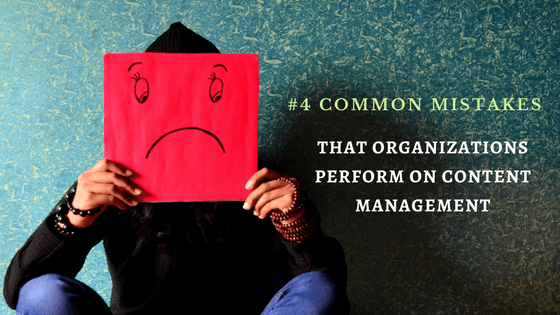
The content management system is settling itself at the higher standards. And as it occurs I was even surprised to see many organizations still suffer finding the right CMS.
It is important for organizations to have Content Management System. As CMS has turned to be the important aspect these days. Industries such as health care and finance generate effective content management very often.
These industries engage many user guide, reports, and other documents. Yet, they fail in selecting the right content management system.
That is why I ended up writing an article that could help you fit in the best CMS.
ARE YOU READY!
A very blind mistake that many organizations commit is, they assume bigger is fitter.
Many organizations conclude themselves stating that investing more makes CMS the best. At the same time, people
think that the benefits of CMS with added functionalities can make the system good.

Hence, they end up finding a content management system for life time. Thus, these are the results of assuming “Bigger is fitter”.
When people find it difficult to use, it turns to be unworthy and ends up with project failure. It is good to keep simple and small enough. By doing so you avoid risks and increase usability that makes business identified.
Did you know adding too many requirements makes it harder and gets difficult to find the product? Let me tell you what adds up when you try to add up requirements.

Thus concentrate on the key selection, evaluation, and differentiation of products. You should make efforts to focus on products that meet both life and death needs. Rather than adding up an excess amount of requirements.
Businesses at start up levels do not estimate the need for CMS and find it difficult to develop business.
The same follows when it comes to organizations that replace an existing system. As they have constrained knowledge about the updated system.

It is good to adapt the system only after understanding the process on how it works. I suppose that is going to be the biggest challenge of building knowledge about the system.
Moreover, the success behind adapting content management system lies in the organization. The same way it depends on the knowledge of the system that the organization has obtained.
Before framing the requirements, organizations have to start understanding the CMS system . Practical approaches involve gaining knowledge of the existing system. Also, make requirements or discuss with companies that already own CMS.
On handling both website and the internet, you need to be better than just selecting the new CMS.
It is because people fail to understand the difference between custom website and open source website. At the same time, the existing website and its requirements prompt CMS. Which further includes outdated design, poor site structure and defective publishing process.

At such case, people try to get it done from the initial stage which involves site redesigning along with CMS. Eventually, people end up selecting a provider who offers both CMS and website design. Carrying out such process badly affects the strategic condition.
To be frank, it is always good to separate CMS from design. I would advise completing the website design first, before proceeding with any of the technology.
When you try to adapt CMS, you automatically end up with combining the following technologies with CMS,
It is definite that all these technologies do support CMS but you need to know is that required through CMS.
The ground approach is to rather look for the best arrangements in each of these zones, independently from the CMS venture. Perceiving that there is pretty much nothing (or no) incorporation or association with the CMS.
The most valuable step that one could do is, select a wise content management system. Though there are some more common pitfalls in which many organizations fall, the above are some that need a better concentration.
Before you could start with the content management system, it is good to have better knowledge about the system. Further proceeding with the business needs could generate effective business requirements.
Thus, good requirements could avoid the natural issues that occur in CMS. This makes the process simple and lets to focus on choosing new products along with handling other needs.